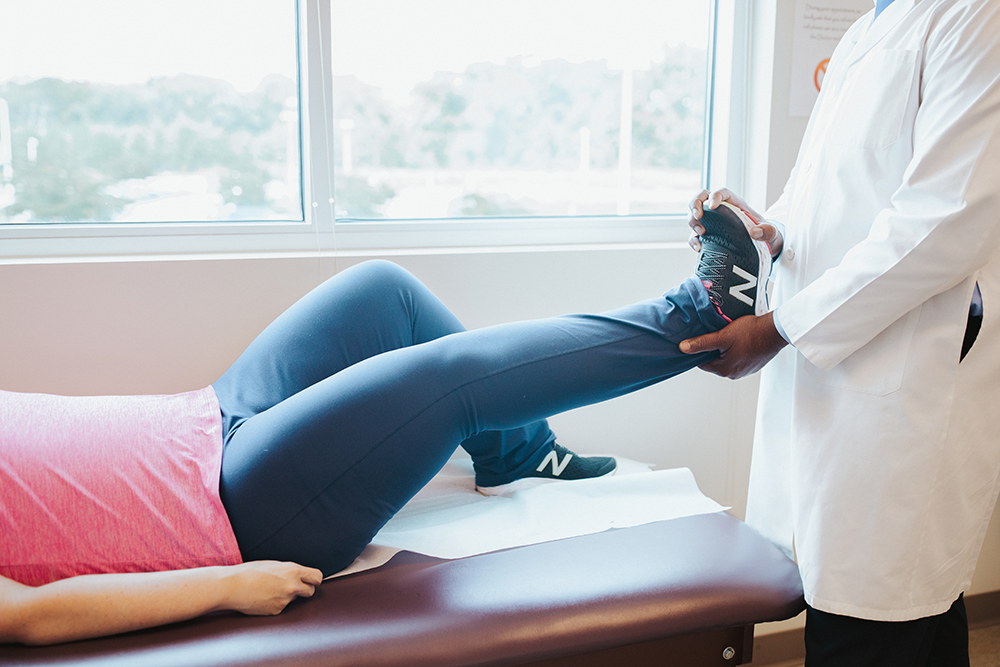
Bariatric physical therapy is crucial to the whole process of weight loss surgery. Research shows that patients who undergo bariatric surgery need a consistent source of physical activity counseling, which we believe can be fulfilled by a physical therapist. This blog will delve deeper into physical therapy and the importance of activity in your weight loss journey.
Your First Bariatric Physical Therapy Appointment
Bariatric physical therapy at Live Healthy MD typically starts with a physical therapist (PT) visit. We want a professional assessment of what you can do and your limitations. The physical therapist then uses that base information to design a program that you can follow. As you progress and get in shape, the PT will build and expand on that initial program. Overall, the goal of pre-surgery is to have most people walking one mile, 3 to 4 times a week.
On the actual day of your first physical therapy appointment, we recommend that you come wearing comfortable clothing and close-toed shoes to exercise. We also encourage you to eat a light snack 30 minutes to an hour before arrival so that you will have the energy to work out. Lastly, we recommend arriving 30 minutes early to check in and complete any paperwork. Again, this initial appointment will determine how many times you will need to go to bariatric physical therapy to maximize your weight loss goals.
Importance of Bariatric Physical Therapy
At their first session, individuals will have some limitations, but that is our general goal. The reason for that is two-fold:
Weight Loss
For you to be able to maintain your weight over time, you have to have consistent activity. The base is to get your heart rate up to 25% above average and sustain that for at least 20 minutes. That’s the minimal goal we have. However, to lose weight, we try to get you to do about 30 to 45 minutes of exercise 4 to 5 times a week. Once your weight stabilizes, we generally try to get you to work out 2 to 3 times a week.
Decreased Risk of Surgery
Our second goal is to reduce the risk of your surgery and complications from your surgery. The three most significant risks that we have surgery wise include:
- Pulmonary embolism (PE) – Blood clots in the legs that break off and go to the lungs
- Post-operative pneumonia – Expanded lungs from lack of deep breathing, which leads to pneumonia
- Cardiac event – Arrhythmia when your body stresses during surgery
For the three of these, if you are in decent shape like we talked about (having the ability to walk a mile 3 to 4 times a week) most of these risks are reduced significantly. You move blood efficiently from the legs to the heart as you walk, which decreases the risk of PE. Taking those big breaths as you walk and exercise allows you to re-expand your lungs after surgery and reduce the risk of pneumonia. And as you walk and increase your heart rate, it decreases your cardiac risk when you stress during surgery.
Ultimately, by finding your limitations, we can help you confidently approach your weight loss surgery appointment without any complications.
Conclusion
Physical therapy helps you regain physical mobility and functionality; bariatric physical therapy focuses on helping you manage conditions such as arthritis, fibromyalgia, diabetes, osteoporosis, and joint pain through weight loss. And the two main components of physical therapy are to reduce the risk of your surgery and give you a much better chance to succeed over the long term. Sign up to make an appointment with a bariatric professional at Bariatric Centers of America today.
Original post by Dr. Donald Maynard with Bariatric Centers of America











